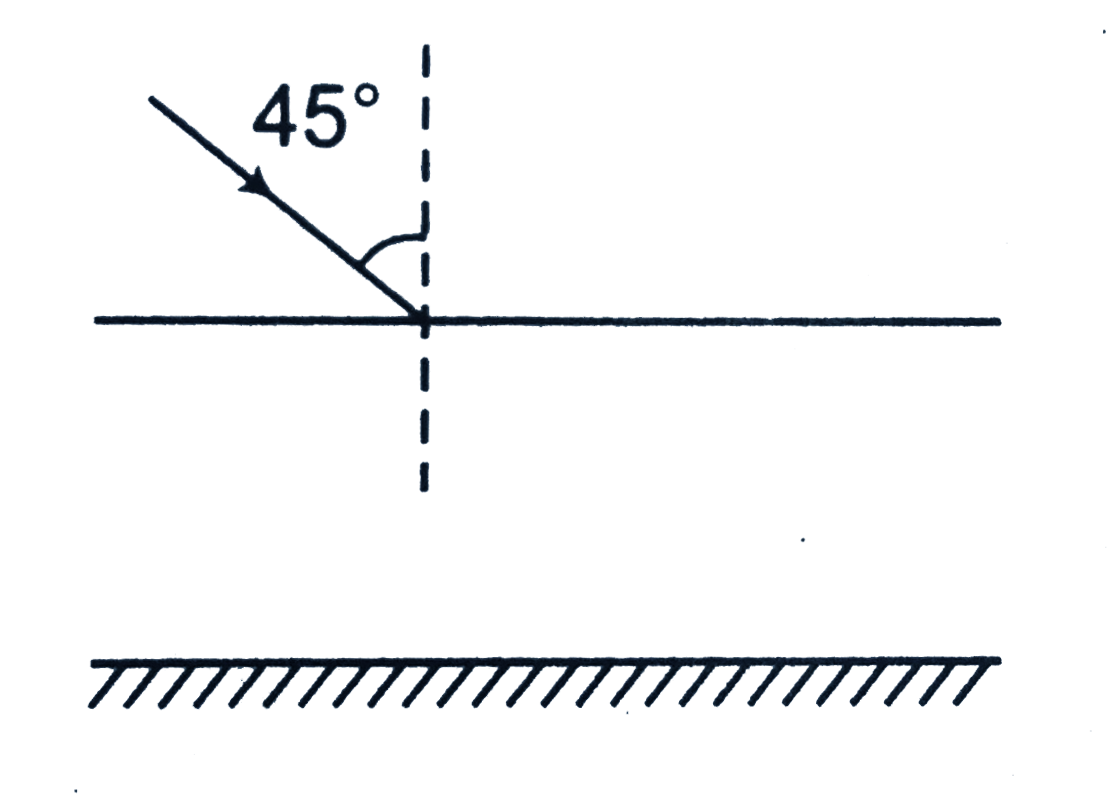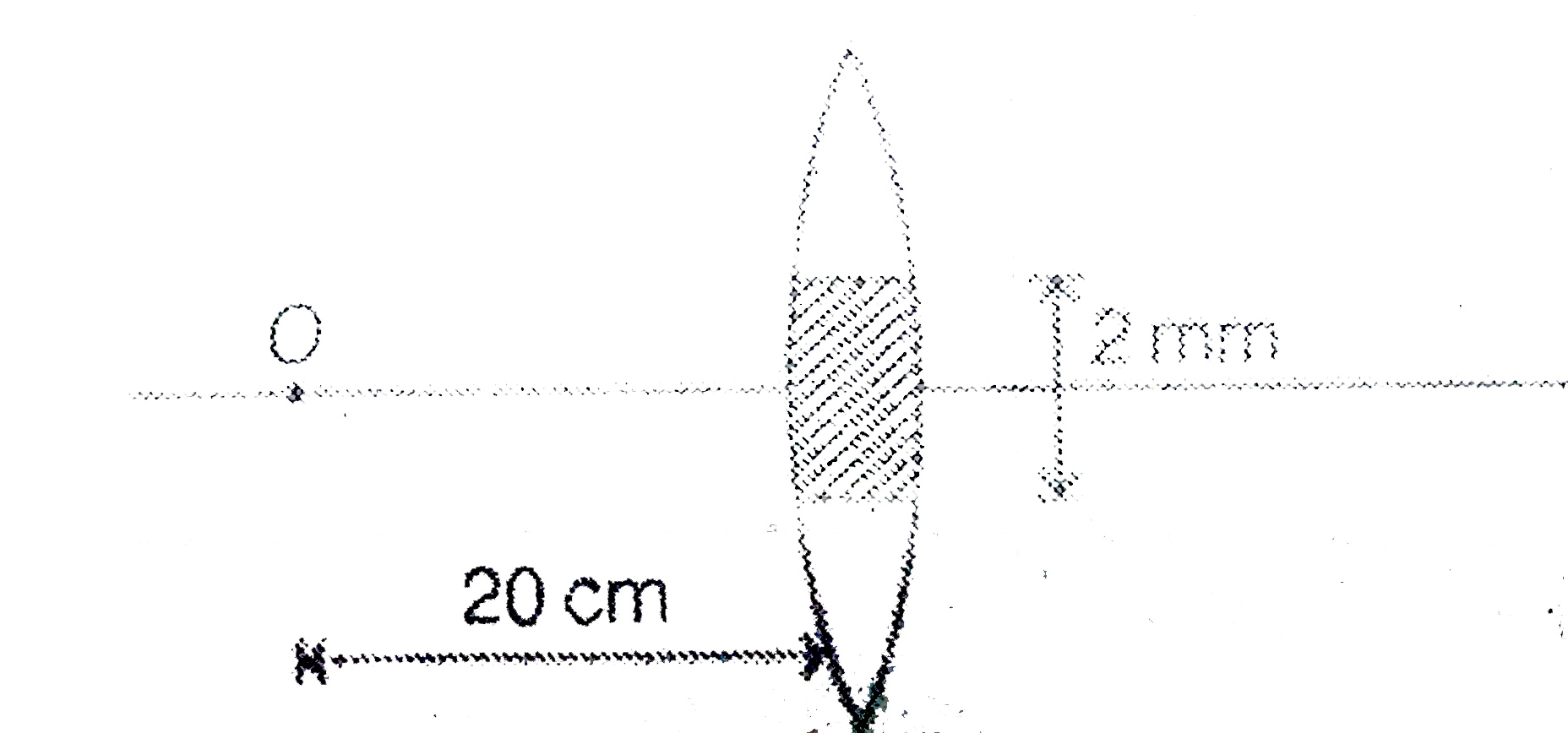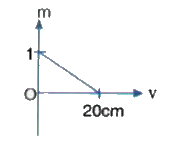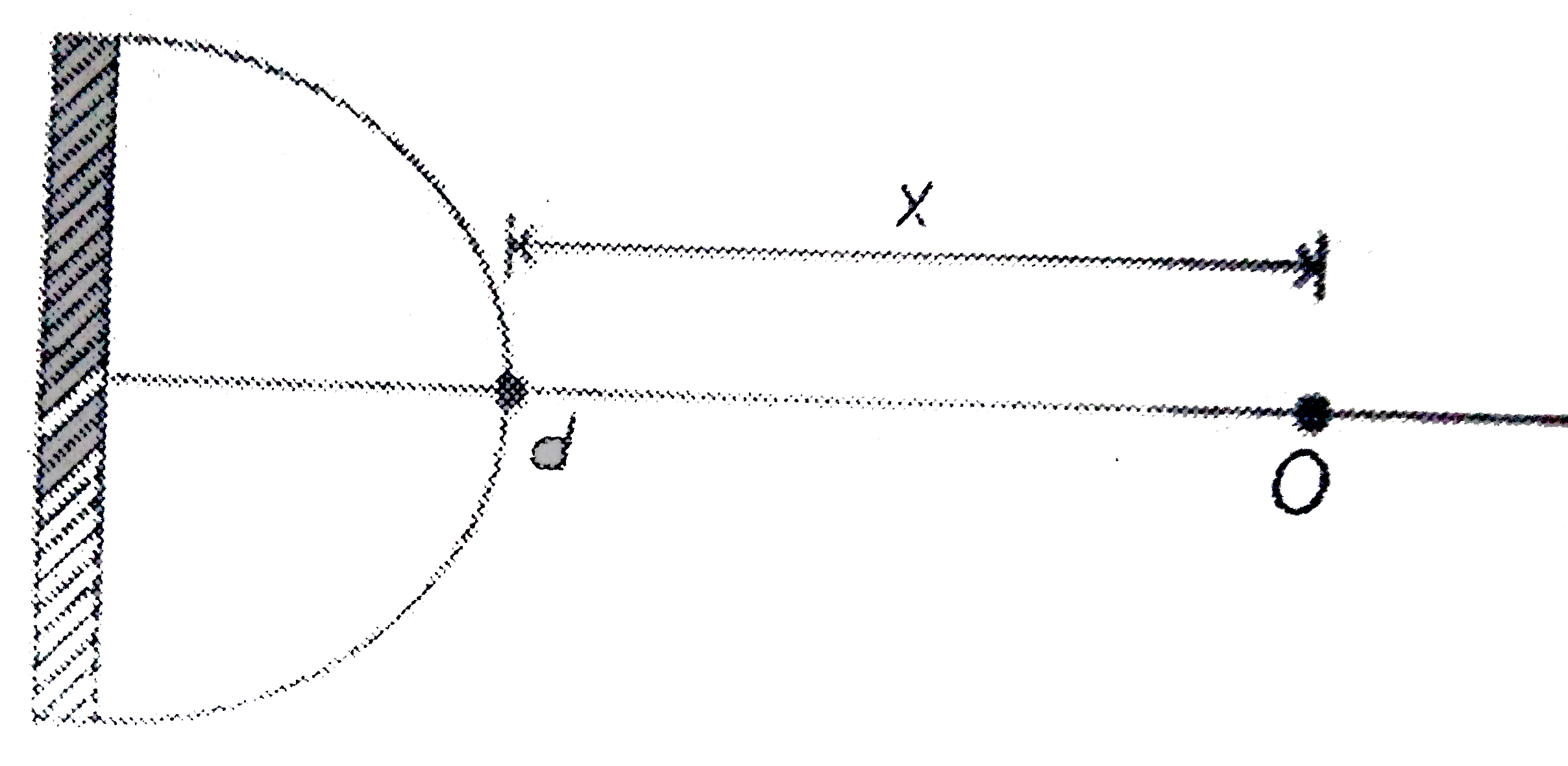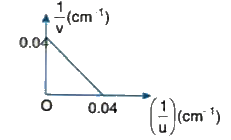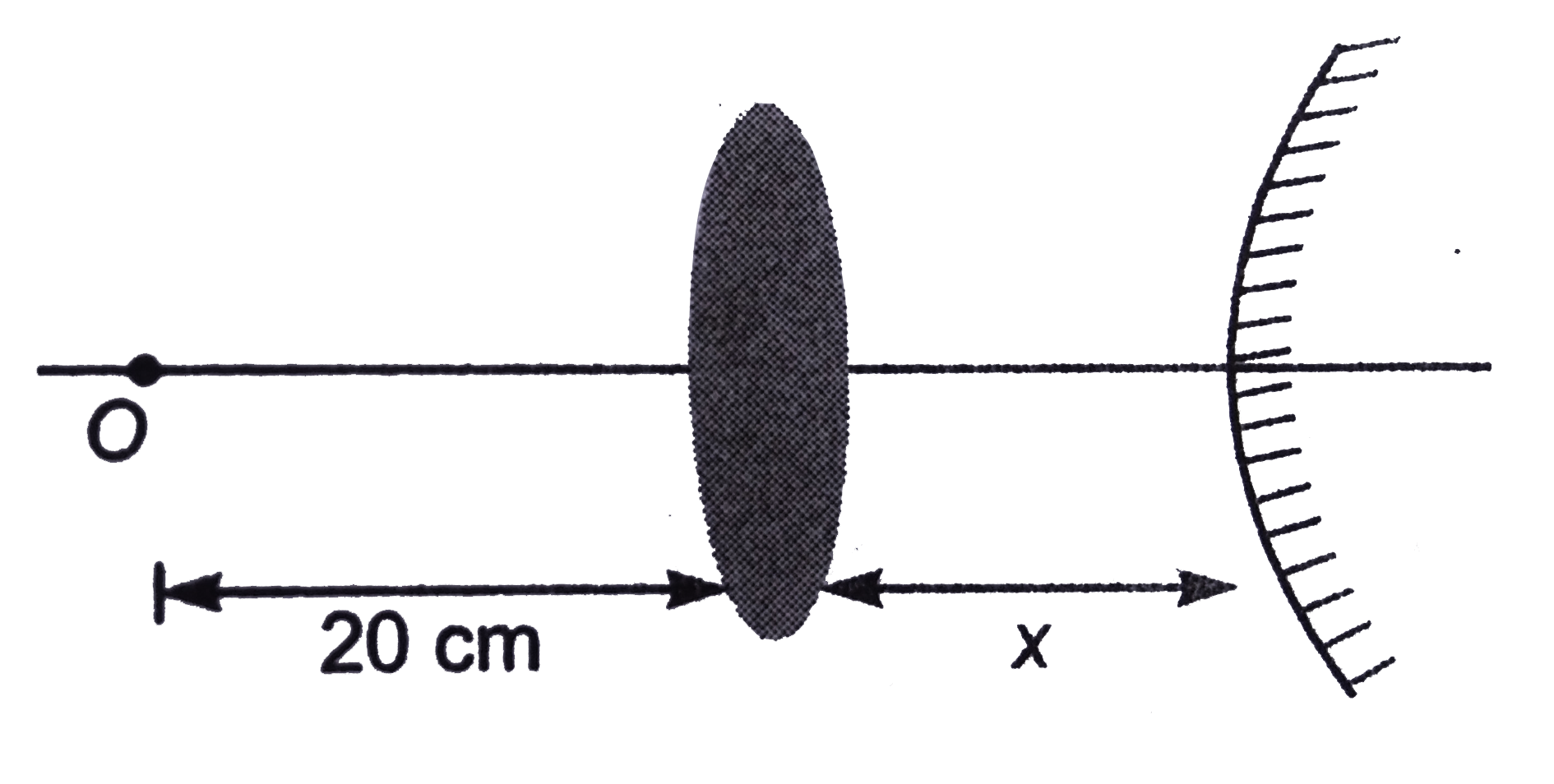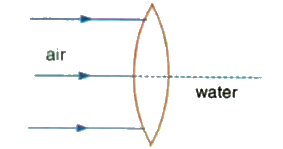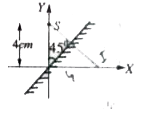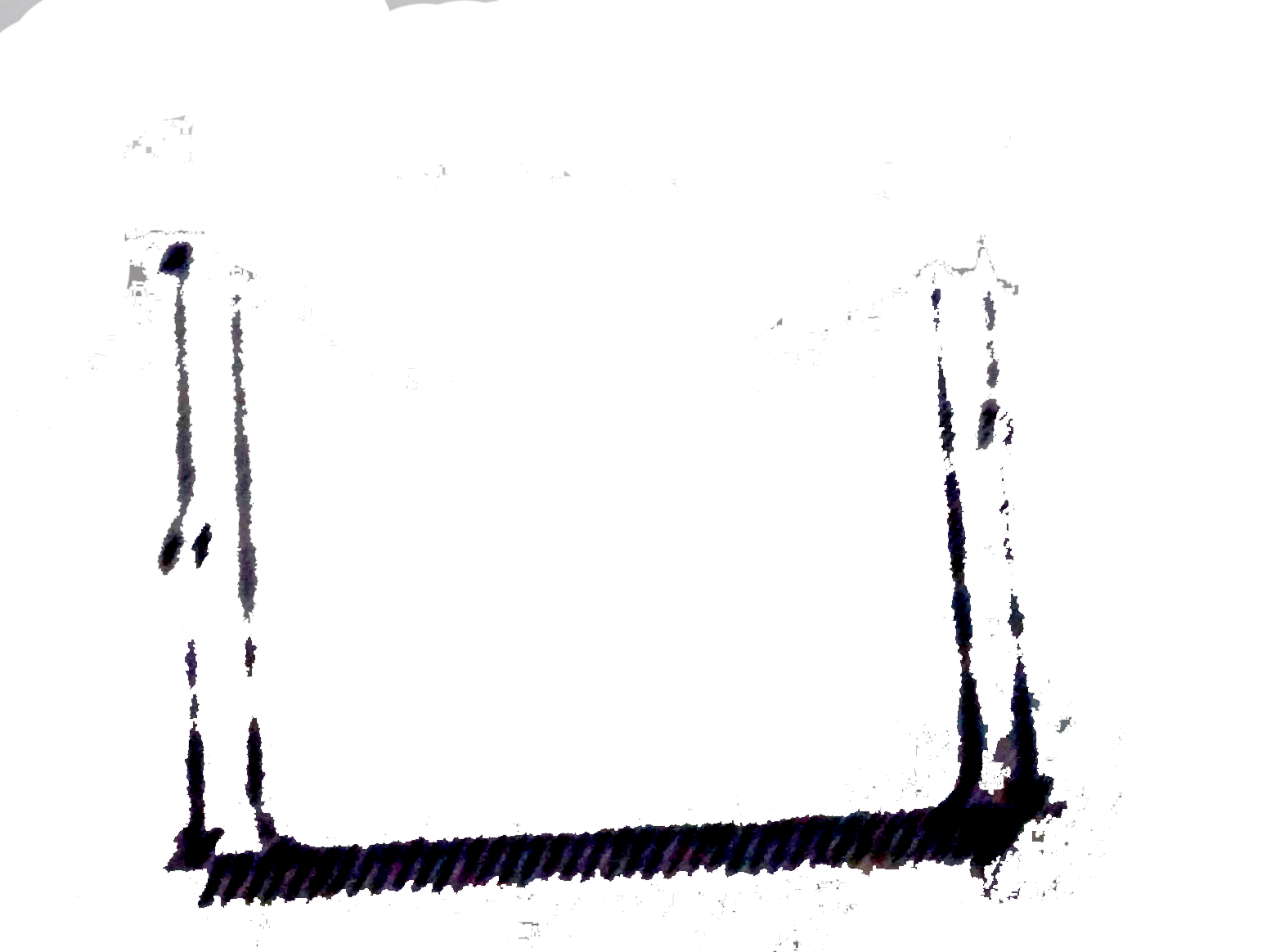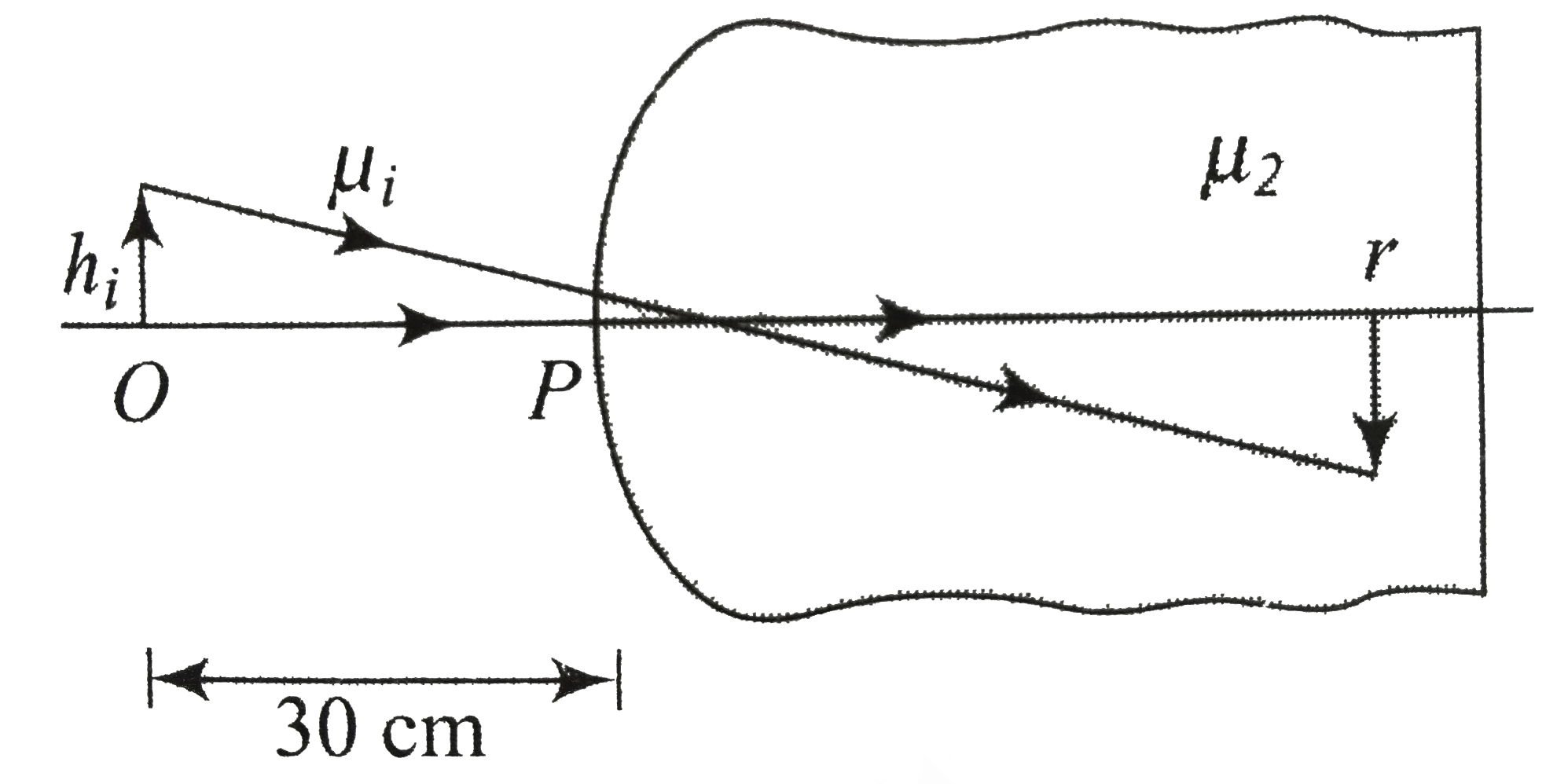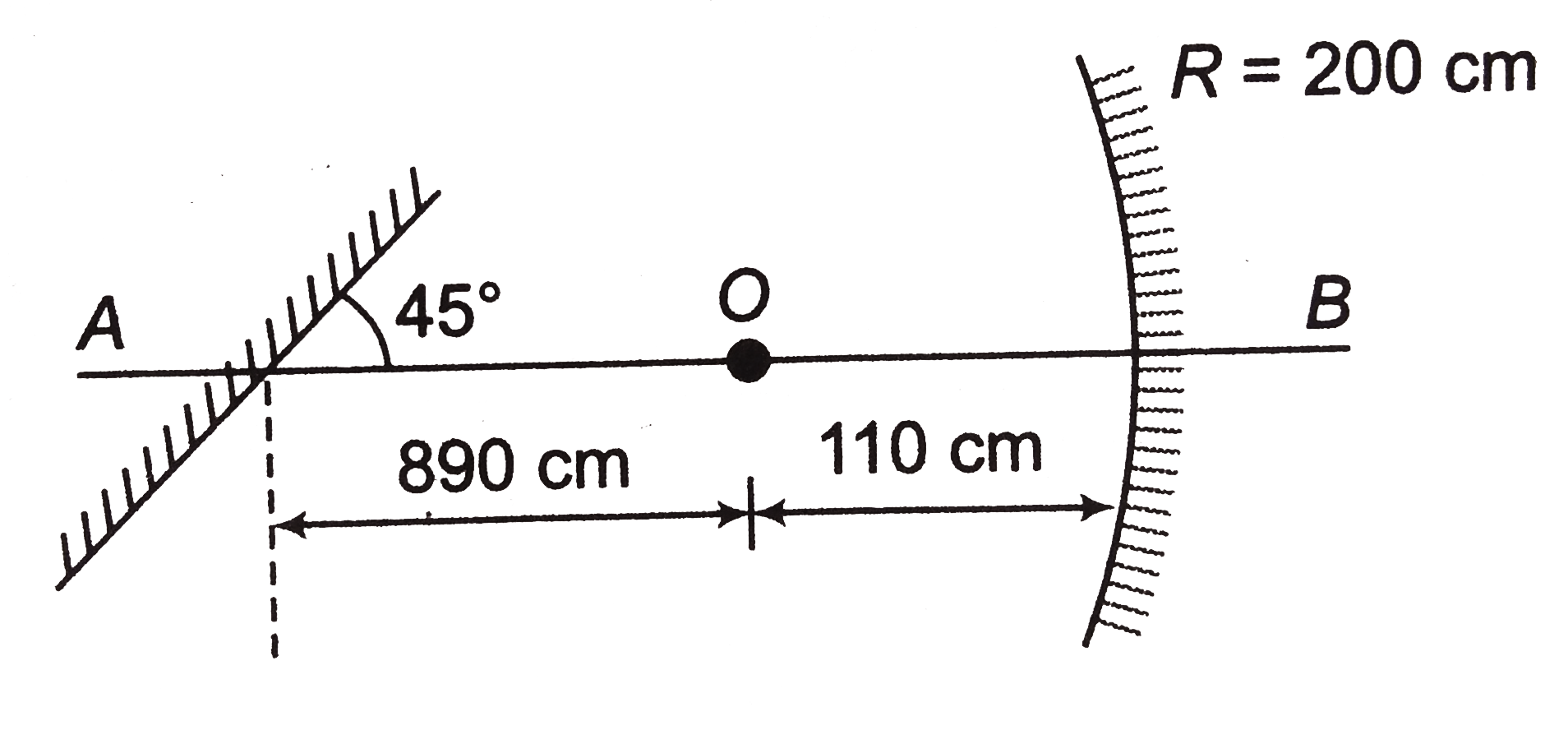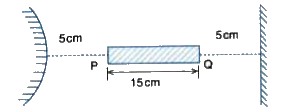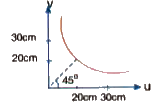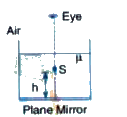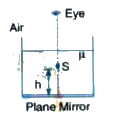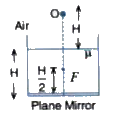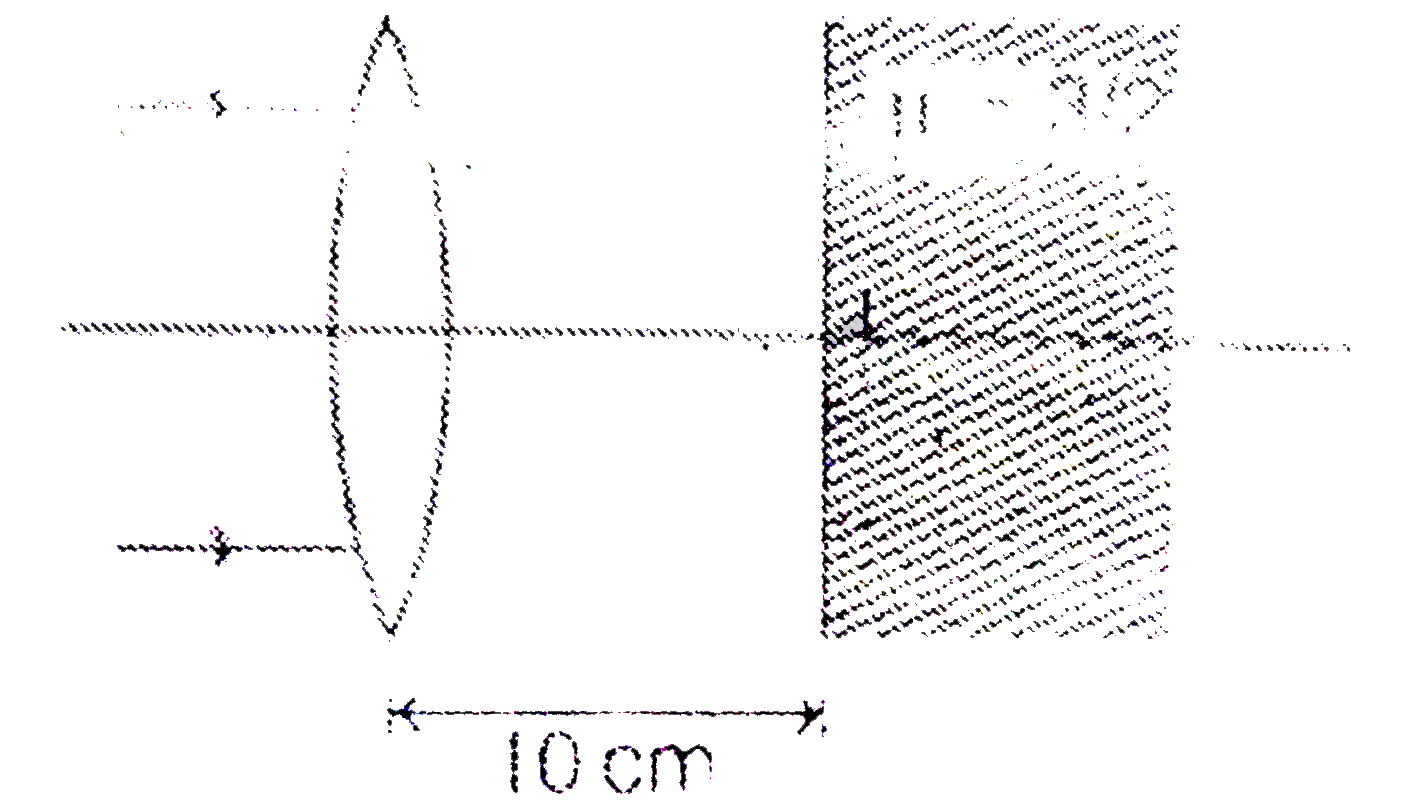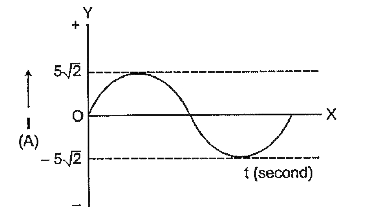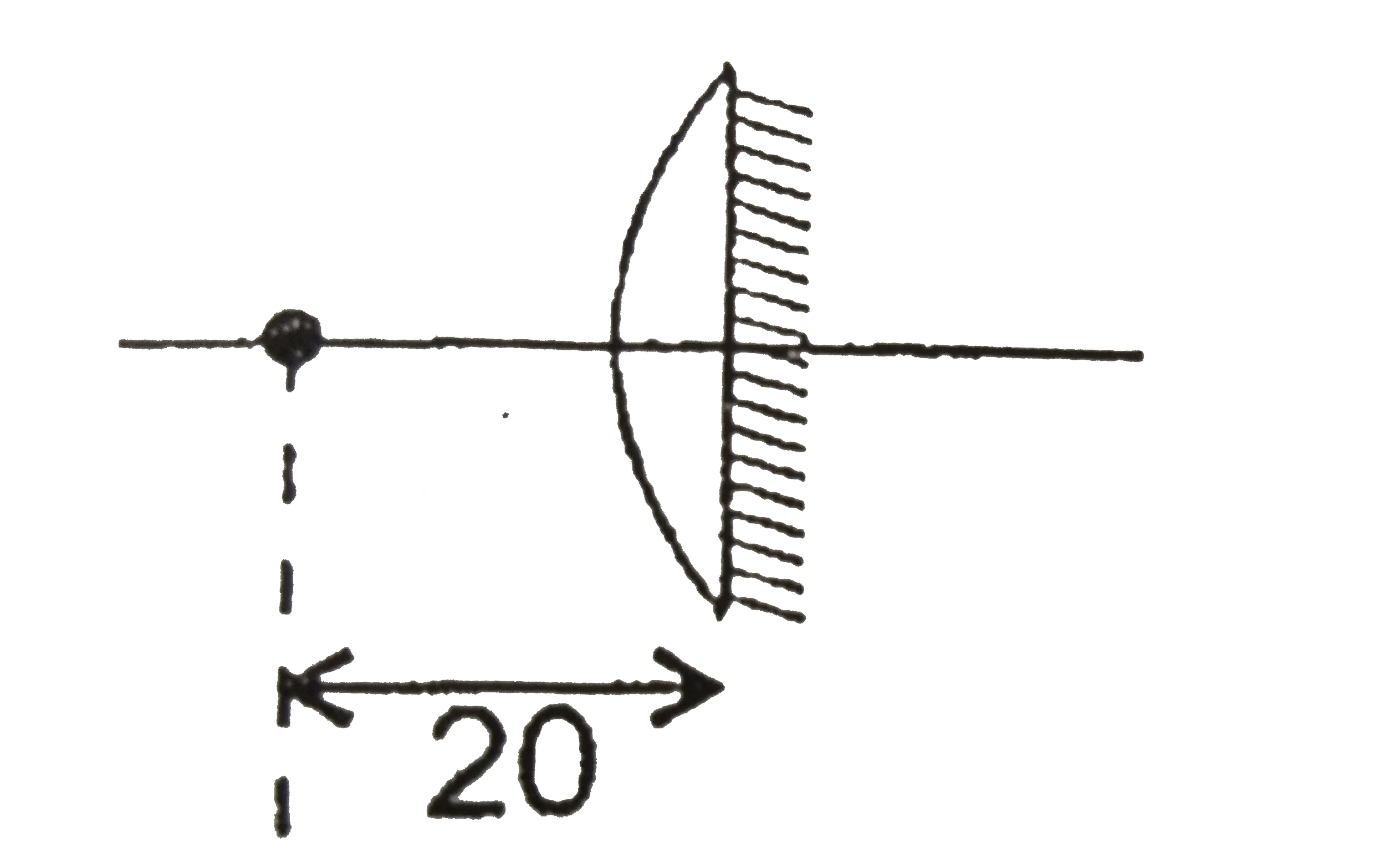PROBLEMS ( LEVEL-I) from AAKASH SERIES RAY OPTICS for Class 12
| Class 12 | PHYSICS |
| Chapter | RAY OPTICS |
| AAKASH SERIES | PROBLEMS ( LEVEL-I) |
| Medium | English |
| Academic Year | 2023-2024 |
Question 3
A sinusoidal electromagnetic plane wave travels through empty space in the x-direction. The electric wave is polarized (plane of vibration in single plane) in the y-direction. Frequency of wave is 1.5 GHz. At a certain point P in space, the oscillating electric field Ey attains a maximum magnitude E0=63 V/m.
What is the wavelength of the wave?View SolutionQuestion 4
A sinusoidal electromagnetic plane wave travels through empty space in the x-direction. The electric wave is polarized (plane of vibration in single plane) in the y-direction. Frequency of wave is 1.5 GHz. At a certain point P in space, the oscillating electric field Ey attains a maximum magnitude E0=63 V/m.
What is the maximum magnitude B0 of the magnetic field at the same point? What is the direction of B?View SolutionQuestion 43
A flint glass prism and a crown glass prism are to be combined in such a way that the deviation of the mean ray is zero. The refractive index of flint and crown glasses for the mean ray are 1.620 and 1.518 respectively. If the refracting angle of the flint prism is 6.0∘, what would be the refracting angle of the crown prism ? View SolutionQuestion 66
A ray of light travelling in a rarer medium strikes a plane boundary between the rarer medium and a denser medium at an angle of incidence 'i' such that the reflected and the refracted rays are mutually perpendicular. Another ray of light of same frequency is incident on the same boundary from the side of denser medium. Find the minimum angle of incidence at the denser-rarer boundary so that the second ray is totally reflectedView SolutionQuestion 69
A convex glass lens (μ=1.5) produces a real image of an object. The size of the image equals the size of the object. When the air surrounding the lens is replaced by a liquid, the size of the image is found to be twice that of the object. Find the refractive index of the liquid.View SolutionQuestion 73
The dispersive power of crown and flint glasses are 0.02 and 0.04 respectively. If the difference between the refractive indices of blue and red colours is 0.012 for crown glass and 0.022 for flint glass, calculate the angle of the two prisms for a deviation of 8∘ (without dispersion).View SolutionQuestion 74
Two prisms of identical geometrical shape are combined with their refracting angles oppositely directed. The materials of the prisms have refractive indices 1.52 and 1.62 for violet light. A violet ray is deviated by 1.0∘ when passes symmetrically through this combination. What is the angle of the prisms ? View SolutionQuestion 79
An object is placed between a plane mirror and a convex mirror as shown, Let I1andI2 be the images formed by the plane mirror and the convex mirror respectively. It is found that distance between I1andI2 is 100 cm, distance between the object and I2 is 60 cm and has magnification 1/2. Find focal length of the convex mirror and also the distance between the two mirrors.
 View Solution
View SolutionQuestion 83
An illuminated point object O is kept 20 cm from a thin convex lens L1 of focal length 15 cm as shown below. A thin diverging lens L2 of focal length 25 cm is kept co - axial with the first lens and 35cm from it, as shown in figure below :
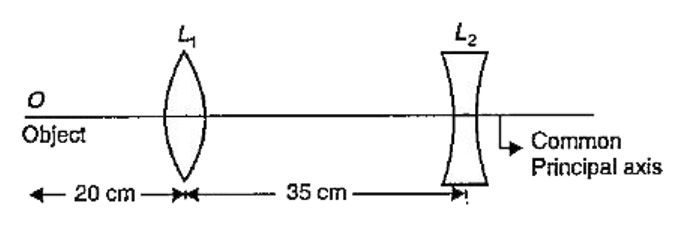
Find the position of the final image formed by this combination of lenses. View SolutionQuestion 84
A thief is running away in a car with velocity of 20 m/s . A police jeep is following him, which is sighted by thief in his rear view mirror which is a convex which is a convex mirror of focal length 10 m . He observes that the image of jeep is moving towards him with velocity of 1 cm/s . if the magnification of the mirror for the jeep at that time is 1/10 . find (a) actual speed of jeep (b) rate at which magnification is changing . Assume that police jeep is on axis of the mirror.View SolutionQuestion 86
The bottom of water tank is lined with a plane mirror.A particle is projected from the origin O under gravity. The equation of the trajectory is y=a(x−x2). The depth of the tank is 4a and this is completely filled. Find the distance of image with respect to mirror after reflection of rays from it.
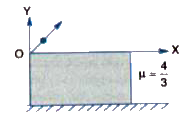 View Solution
View SolutionQuestion 90
A point source S is placed at a height h from the bottom of a vessel of height H(<h). The vessel is polished at the base. Water is polished at the base. Water is gradually filled in the vessel at a constant rate αm3/s. The distance d of image of the source after reflection from mirror from the bottom of the vessel varies with time t as
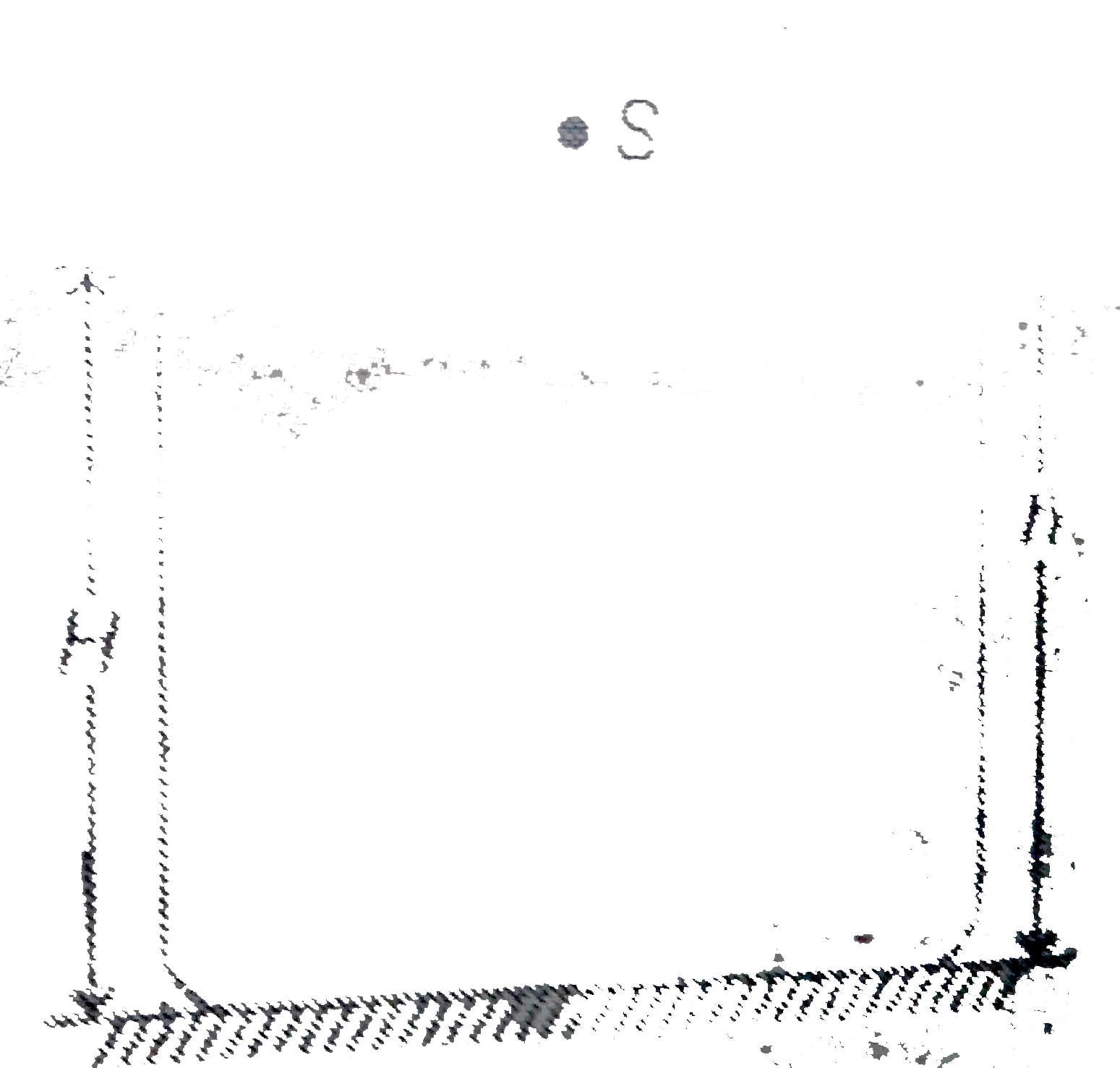 View Solution
View SolutionQuestion 91
A concave mirror with its optic axis vertical and mirror facinig upward is placed at the bottom of the water tank. The radius of curvature of the mirror is 40 cm and refractive index for water μ=4/3 . The tank is 20 cm deep and if a bird is flying over the tank at a height of 60 cm above the surface of water, find the position of image of the bird. View SolutionQuestion 92
Three different slabs consisting of different media are placed in front of a concave mirror of radius of curvature 150 cm. The whole arrangement is placed in water (μ=4/3). An object O is placed at a distance 153 cm from the mirror. The refractive index of different media are given in the diagram. Find the position of final image formed by the system.
 View Solution
View SolutionQuestion 95
A ray of light enters a glass slab from air as shown in figure. If refractive index of glass slab is given by μ=A−Bt, where A and B are constants and t is the thickness of slab measured from the top surface. Find the maximum depth travelled by ray in the slab. Assume thickness of slab to be sufficiently large.
 View Solution
View SolutionQuestion 97
A hemisphere (made of material of refractive index √3)of radius ris placed on a horizontal surface with its base touching the surface. A vertical beam of cross sectional radius √32ris incident symmetrically on its curved surface. Find the radius of the spot of light formed on the horizontal surface View SolutionQuestion 98
A transparent cylinder of radius 2m has a mirrored surface on its right half as shown in figure. A light ray travelling in air is incident on the left side of the cylinder.
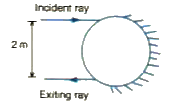
The incident ray and the exiting ray are parallel and at a distance 2m. Determine the refractive index of the material of the cylinder.View SolutionQuestion 99
A point object is placed on the optic axis of a convex lens of focal length f at a distance of 2f to the left it. The diameter of the lens d. An eye is placed are distance of 3f to the right of the lens and a distance below the optic axis. The maximum value of h to the image is View SolutionQuestion 106
A converging lens of focal length 15 cm and a converging mirror of focal length 10 cm are placed 50 cm apart with common principal axis. A point source is placed in between the lens and the mirror at a distance of 40 cm from the lens. Find the locations of the two images formed. View SolutionQuestion 107
A convex lens of focal length 15 cm and concave mirror of focal length 30 cm are kept their optical axes PQ and RS parallel but separated in vertical direction by 0.6 m, as shown. The distance between the lens and mirror is 30 cm. An upright object AB of height 1.2 m is placed on the optic axic PQ of the lens at a distance of 20 cm from the lens.

Find the linear magnification of the first image after refraction from the lens.View SolutionQuestion 108
Magnification by a lens of an object at distance 10 cm from it is -2. now a seconnd lens is placed exactly at the same positon where first was kept, without changing the distance between object and lens. The magnification by this second lens is -3.
Now both the lenses are kept in contact at the same place. what will be the new magnification ? View SolutionQuestion 110
A thin equiconvex lens of glass(μ=1.5) with radius of curvature 4m is placed on a horizontal plane mirror. When the space between the lens and mirror is filled with a liquid, an object held at a distance 6m vertically above the lens is found to coincide with its own image. What is the refractive index of the liquid.View SolutionQuestion 111
Two thin converging lenses are placed on a common axis, so that the centre of one of them coincides with the focus of the other. An object is placed at a distance twice the focal length from the left hand lens. Where will its image be? What is the lateral magnification? The focal of each lens is f.View SolutionQuestion 112
An equiconvex lens of refractive index 1.5 and focal length 10 cm is held with its axis vertical and its lower surface immersed in water, the upper surface being in air. At what distance from the lens will a vertical beam of parallel rays incident on the lens be focussed? μ.=4/3.View SolutionQuestion 114
A converging lens forms a five fold magnified image of an object. The screen is moved towards the object by a distance d=0.5m, and the lens is shifted so that the image has the same size as the object. Find the power of lens and the initial distance between the object and the screen. View Solution
All Exercises from AAKASH SERIES Class 12 PHYSICS RAY OPTICS
- EXERCISE (LONG ANSWER QUESTIONS )
- EXERCISE (SHORT ANSWER QUESTIONS )
- EXERCISE (VERY SHORT ANSWER QUESTIONS )
- EXERCISE (LONG ANSWER QUESTIONS )
- EXERCISE (SHORT ANSWER QUESTIONS )
- EXERCISE (VERY SHORT ANSWER QUESTIONS )
- EXERCISE (LONG ANSWER QUESTIONS )
- EXERCISE (SHORT ANSWER QUESTIONS )
- EXERCISE (VERY SHORT ANSWER QUESTIONS )
- EXERCISE (LONG ANSWER QUESTIONS )
- EXERCISE (SHORT ANSWER QUESTIONS )
- EXERCISE (VERY SHORT ANSWER QUESTIONS )
- PROBLEMS ( LEVEL-I)
- PROBLEMS ( LEVEL-II)
- PROBLEMS ( LEVEL-I)
- PROBLEMS ( LEVEL-II)
- PROBLEMS ( LEVEL-I)
- PROBLEMS ( LEVEL-II)
- PROBLEMS ( LEVEL-I)
- PROBLEMS ( LEVEL-II)
- EXAMPLE
- EXAMPLE
- EXAMPLE
- EXAMPLE


